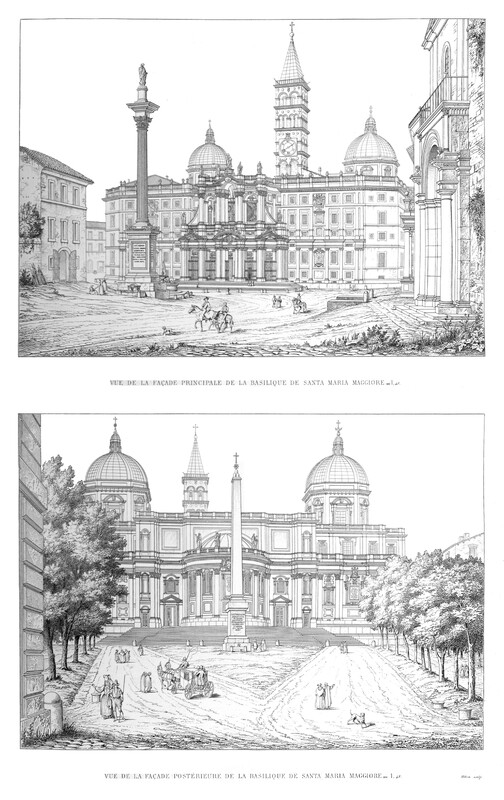Santa Maria Maggiore
Item
- Title
- Alternative Title
- Creator
- Drafter
- City
- Location
- Building Creation Date
- Description
- Techniques
- Classification
- Building Type
- Documentation Type
- Style/Period
- Cultural Context
- Subject
- Source
- Access Rights
- creator
-
Santa Maria Maggiore
-
Basilica di Santa Maria Maggiore
-
St Mary Major
-
Carlo Rainaldi (Italian architect, 1611-1691)
-
Ferdinando Fuga (Italian architect, 1699 - ca. 1782)
-
Martino Longhi the Elder (Italian architect, ca. 1534-ca. 1591)
-
Flaminio Ponzio (Italian architect, ca.1560-1613)
-
Hibon, Auguste (French engraver and etcher, 1780-1857)
-
Rome, Lazio, Italy
-
Italy
-
ca. 420-1750 (creation)
-
perspective of the main facade
-
perspective of the rear façade, exterior perspectives
-
Situated at the end of the Esquiline Hill and formerly known as S Maria ad Praesepem, S Maria Maggiore was traditionally founded by Pope Liberius (reigned 352-366) and financed by Johannes, a rich citizen, after a miraculous summer snowfall. It is more likely, however, that it was founded in the early 5th century by Sixtus III, whose name appears in the mosaics of the triumphal arch in front of the apse. Until the 12th century, when Eugenius III (reigned 1145-1153) built the narthex, work on the church was mainly limited to maintenance. The mosaic decoration of S Maria Maggiore was executed in the 5th and 8th centuries
-
the earlier scheme, in the Classical tradition, comprises the most important mosaic cycle in Rome of this period. Chapels were added and other changes in subsequent centuries
-
Longhi and Fuga are responsible for changes to the facade.
-
line drawings (drawings)
-
Architectural Documentation
-
illustrations
-
Early Christian
-
Italian
-
architectural exteriors
-
architectural interiors
-
Letarouilly, Paul Marie. Edifices de Rome Moderne. Paris: A. Morel, 1868, 305.
-
Public Domain
-
Rainaldi, Carlo
-
Fuga, Ferdinando
-
Longhi, Martino, the elder
-
Ponzio, Flaminio
- Item sets
- Architecture Illustrations
Carlo Rainaldi (Italian architect, 1611-1691) et al., “Santa Maria Maggiore”, Arch Design Images, accessed December 22, 2025, https://exhibits.lib.ttu.edu/s/archlib/item/19029


